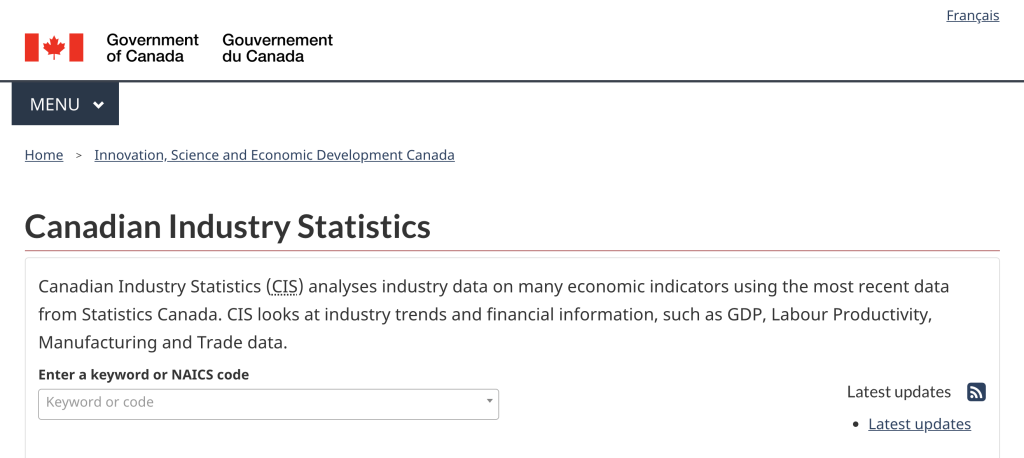Getting Started with Industry Research
Sally Armstrong
Mature Industry vs. Emerging Industry
When starting your industry research you want to first understand whether you are looking at a mature industry or an emerging industry. A mature industry tends to have larger, more established, and profitable companies that are at the later stage of the industry lifecycle. Food and agriculture, mining and natural resources extraction, and financial services are some examples of mature industries. Mature industries are significantly important to the economy which means a large amount of secondary research is available on them.
Alternatively, an emerging industry tends to consist of a fewer number of companies and is often centred around new technology. Artificial intelligence, robotics, virtual reality, and blockchain are some examples of emerging industries. An emerging industry often grows to overtake and replace older technology, for example, when Uber grew to overtake the taxi industry. Unlike mature industries, emerging industries are newly formed which means there is a smaller amount of secondary research available on them. This can sometimes make it difficult to find detailed or exact information on specific topics. In this situation, it can be helpful to find a similar but more established industry to help determine industry trends, growth, barriers to entry, and more. For example, it is likely that Uber relied on secondary research on the taxi industry when it first emerged on the market. They were bringing a new concept to the industry and likely relied upon existing secondary research from the mature taxi industry. In other words, do not get discouraged if you are having trouble finding information on your emerging industry.

QUICK TIP
Take a moment to consider the mature industries that your new technology will potentially disrupt and overtake. This will likely lead you to valuable information on the environment you plan to grow and establish your own business.
Industry Classification Codes
You should be aware that most mature U.S. and Canadian industries are classified into different classification systems. The North American Classification System (NAICS) was released in 1998 in a partnership between Canada, Mexico, and the United States. It takes into account the statistical needs of the North American Free Trade Agreement (NAFTA) by providing a consistent way to collect, organize, code and publish industry data.
NAICS (pronounced “nakes” and rhymes with “snakes”) replaced the first Canadian Standard Industrial Classification (SIC) system which was established in 1948. You should be aware that some business databases and websites still use SIC codes to classify their industry information but NAICS is the more commonly used industry classification system.
The most recent revision to NAICS was released in 2017 with the next revision scheduled for 2022. However, updated versions are released periodically to meet urgent classification needs. For example, Statistics Canada released NAICS Canada 2017 Version 3.0 to allow for the inclusion of 5 cannabis industries.
NAICS industries are identified by a 6-digit code, in contrast to the 4-digit SIC code. The longer NAICS code accommodates the larger number of sectors and allows more flexibility in designating subsectors.
The NAICS hierarchical structure is broken down as follows:
-
Sector: 2-digit code
-
Subsector: 3-digit code
-
Industry Group: 4-digit code
-
NAICS Industry: 5-digit code
-
National Industry: 6-digit code
-
-
-
-
As an example, 445291 is the NAICS code for Baked Goods Stores. The NAICS hierarchical structure for baked goods stores looks like the following:
-
Sector: 44 Retail trade
-
Subsector: 445 Food and beverage stores
-
Industry Group: 4452 Speciality food stores
-
NAICS Industry: 44529 Other specialty stores
- Canadian Industry: 445291 Baked goods stores
-
-
-
You can explore the entire NAICS Classification Structure on the Statistics Canada website here.
A mature industry is more likely to have a NAICS code which can be very helpful when you are conducting research. You can input a NAICS code into many of our business databases in order to find out more information about a particular industry or use the NAICS code to search for information in Google. An emerging industry, because it will likely be centred around new technology, will not have a NAICS code associated with it. Below is an example using the NAICS code 445291 Baked Goods Stores in IBISWorld. You should also try using NAICS codes in other databases like Business Source Ultimate or ABI Inform Complete.

As another example, you can visit the Canadian Industry Statistics site from Innovation, Science and Economic Development Canada and use a NAICS code. You are able to type in a keyword or NAICS code to find more information about the businesses in a specific industry, their financial performance, and salary and wage data.


